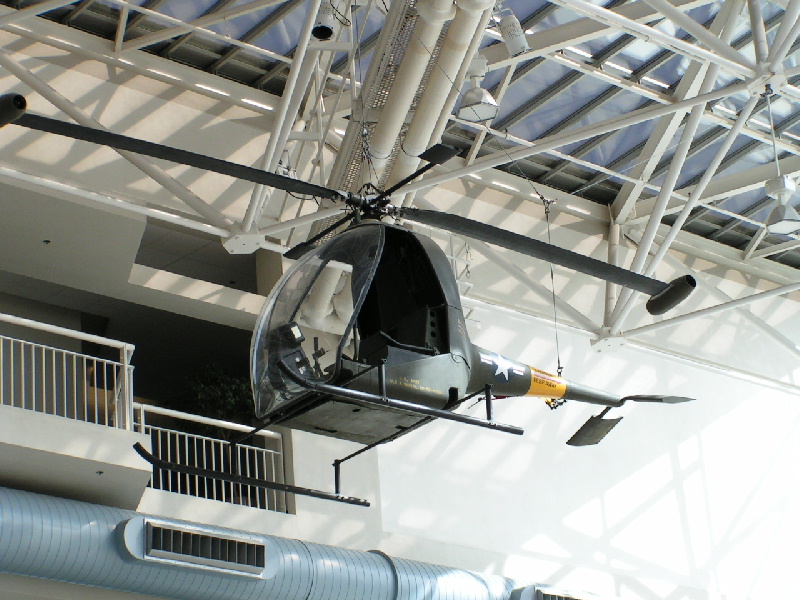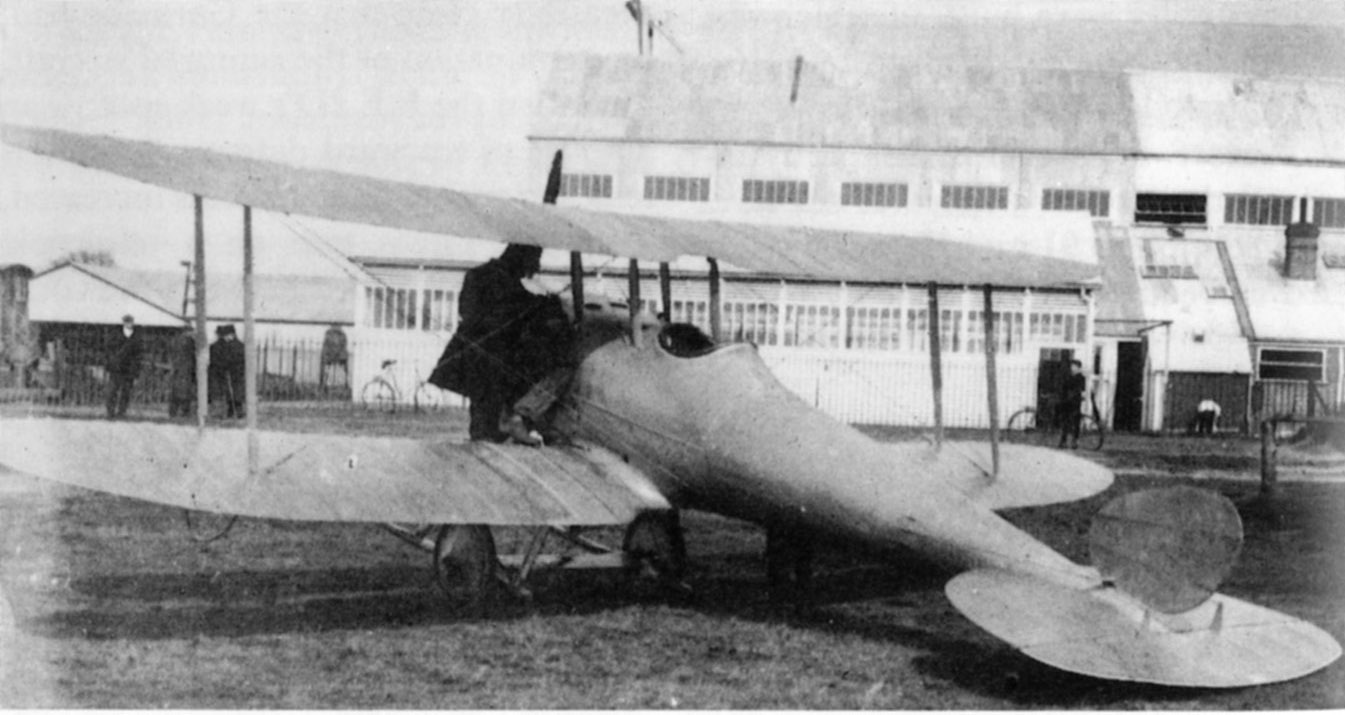|
Tip Jet
A tip jet is a jet nozzle at the tip of some helicopter rotor blades, used to spin the rotor, much like a Catherine wheel firework. Tip jets replace the normal shaft drive and have the advantage of placing no torque on the airframe, thus not requiring the presence of a tail rotor. Some simple monocopters are composed of nothing but a single blade with a tip rocket. Tip jets can use compressed air, provided by a separate engine, to create jet thrust. Other types use a system that functions similarly to the afterburner (reheat) on a conventional jet engine, except that instead of reheating a gas jet, they serve as the primary heater, creating greater thrust than the flow of pre-compressed air alone; the best description of this is ''thrust augmentation''. Other designs includes ramjets or even a complete turbojet engine. Some, known as ''rocket-on-rotor'' systems, involve placing rockets on the tips of the rotor blades that are fueled from a tank. If the helicopter's engine fail ... [...More Info...] [...Related Items...] OR: [Wikipedia] [Google] [Baidu] |
Hiller YH-32 Hornet
The Hiller YH-32 Hornet (company designation HJ-1) is an American Ultralight aircraft (United States), ultralight helicopter built by Hiller Aircraft in the early 1950s. It was a small and unique design because it was powered by two Hiller 8RJ2B ramjet engines mounted on the rotor blade tips which weigh each and deliver an equivalent of for a total of . Versions of the HJ-1 Hornet were built for the United States Army and the United States Navy in the early 1950s. The Hiller Museum identifies the YH-32A, named the ''Sally Rand'', as the first Attack Helicopter, helicopter gunship. The Hiller HOE-1 became the first production ramjet helicopter, and the Army and Navy flew a small number of these aircraft for a short time to test and evaluate the technology. Design and development The Hiller HJ-1 Hornet was an early attempt to build a jet-powered helicopter using ramjets, with work beginning in 1948. Before that there had been experiments with the XH-26 Jet Jeep tip rotor pulse ... [...More Info...] [...Related Items...] OR: [Wikipedia] [Google] [Baidu] |
Victoria University Of Manchester
The Victoria University of Manchester, usually referred to as simply the University of Manchester, was a university in Manchester, England. It was founded in 1851 as Owens College. In 1880, the college joined the federal Victoria University. After the demerger of the Victoria University, it gained an independent university charter in 1904 as the Victoria University of Manchester. On 1 October 2004, the Victoria University of Manchester merged with the University of Manchester Institute of Science and Technology (UMIST) to form a new, larger entity named the University of Manchester. History 1851–1951 Owens College was founded in 1851, named after John Owens, a textile merchant, who left a bequest of £96,942 for the purpose. Its first accommodation was at Cobden House on Quay Street, Manchester, in a house which had been the residence of Richard Cobden. In 1859, Owens College was approved as a provincial examination centre for matriculation candidates of the Universit ... [...More Info...] [...Related Items...] OR: [Wikipedia] [Google] [Baidu] |
Friedrich Von Doblhoff
Friedrich may refer to: Names *Friedrich (given name), people with the given name ''Friedrich'' *Friedrich (surname), people with the surname ''Friedrich'' Other *Friedrich (board game), a board game about Frederick the Great and the Seven Years' War * ''Friedrich'' (novel), a novel about anti-semitism written by Hans Peter Richter *Friedrich Air Conditioning, a company manufacturing air conditioning and purifying products *, a German cargo ship in service 1941-45 See also *Friedrichs (other) *Frederick (other) *Nikolaus Friedreich Nikolaus Friedreich (1 July 1825 in Würzburg – 6 July 1882 in Heidelberg) was a German pathologist and neurologist, and a third generation physician in the Friedreich family. His father was psychiatrist Johann Baptist Friedreich (1796–18 ... {{disambig ja:フリードリヒ ... [...More Info...] [...Related Items...] OR: [Wikipedia] [Google] [Baidu] |
Second World War
World War II or the Second World War (1 September 1939 – 2 September 1945) was a World war, global conflict between two coalitions: the Allies of World War II, Allies and the Axis powers. World War II by country, Nearly all of the world's countries participated, with many nations mobilising all resources in pursuit of total war. Tanks in World War II, Tanks and Air warfare of World War II, aircraft played major roles, enabling the strategic bombing of cities and delivery of the Atomic bombings of Hiroshima and Nagasaki, first and only nuclear weapons ever used in war. World War II is the List of wars by death toll, deadliest conflict in history, causing World War II casualties, the death of 70 to 85 million people, more than half of whom were civilians. Millions died in genocides, including the Holocaust, and by massacres, starvation, and disease. After the Allied victory, Allied-occupied Germany, Germany, Allied-occupied Austria, Austria, Occupation of Japan, Japan, a ... [...More Info...] [...Related Items...] OR: [Wikipedia] [Google] [Baidu] |
Gluhareff Pressure Jet
The Gluhareff Pressure Jet (or tip jet) is a type of jet engine that, like a valveless pulse jet, has no moving parts. It was invented by Eugene Michael Gluhareff, a Russian-American engineer who envisioned it as a power plant for personal helicopters and compact aircraft such as microlights. Mechanism Having no moving parts, the engine works by having a coiled pipe in the combustion chamber that superheats the fuel (propane) before being injected into the air-fuel inlet. In the combustion chamber, the fuel/air mixture ignites and burns, creating thrust as it leaves through the exhaust pipe. Induction and compression of the fuel/air mixture is done both by the pressure of propane as it is injected, along with the sound waves created by combustion acting on the intake stacks. The engine has three intake stages, which are sized according to the sound created by the combustion process when running. This has exactly the same effect as the turbine and compressor in a turbojet, cre ... [...More Info...] [...Related Items...] OR: [Wikipedia] [Google] [Baidu] |
Eugene Michael Gluhareff
Eugene Michael Gluhareff (April 5, 1916 – July 15, 1994) was born in Petrograd (now known as St. Petersburg), Russia and moved to the United States in 1924. Gluhareff was an engineer, the son of Michael Gluhareff of Sikorsky Aircraft. He is much acclaimed for his pioneering work on tip jets, inventor of the Gluhareff Pressure Jet and was a contributor to the American Helicopter XH-26 Jet Jeep. Early life Eugene M. Gluhareff was born in St. Petersburg, Russia in 1916, was the oldest of two children, born to Michael E. Gluhareff and Antonina Gluhareff. His father, Michael E. Gluhareff was an aircraft engineer who was a former Chief engineer at the Sikorsky Aircraft division of the United Aircraft Corporation, who graduated from the Russian Imperial Military Engineering College (now known as the Saint Petersburg Military Engineering-Technical University). Gluhareff graduated from the Rensselaer Polytechnic Institute in 1944 with a Bachelor of Sciences in Aeronautical Engineer ... [...More Info...] [...Related Items...] OR: [Wikipedia] [Google] [Baidu] |
Royal Aircraft Establishment
The Royal Aircraft Establishment (RAE) was a British research establishment, known by several different names during its history, that eventually came under the aegis of the Ministry of Defence (United Kingdom), UK Ministry of Defence (MoD), before finally losing its identity in mergers with other institutions. The British Army Balloon Factory was established on Farnborough Common in the early 1900s. By 1912 it had come under civilian control and was the Royal Aircraft Factory (RAF) In 1918 it was renamed Royal Aircraft Establishment to prevent confusion with the newly created Royal Air Force. The first site was at Farnborough Airfield ("RAE Farnborough") in Hampshire to which was added a second site RAE Bedford (Bedfordshire) in 1946. On 1 May 1988 it was renamed the Royal Aerospace Establishment (RAE) before merging with other research entities to become part of the new Defence Research Agency in 1991. History In 1904–1906 the Army Balloon Factory, which was part of the A ... [...More Info...] [...Related Items...] OR: [Wikipedia] [Google] [Baidu] |
Saunders-Roe
Saunders-Roe Limited, also known as Saro, was a British aerospace and marine-engineering company based at Columbine Works, East Cowes, Isle of Wight. History The name was adopted in 1929 after Alliott Verdon Roe (see Avro) and John Lord took a controlling interest in the aircraft and boat-builders SE Saunders. Prior to this (excepting for the Sopwith/Saunders Bat Boat) the products were Saunders, the A4 Medina for example dating from 1926. Sam Saunders, the founder, developed the Consuta material used in marine and aviation craft. The Saunders-Roe interest in aviation didn’t prevent the firm from continuing with the boatbuilding activities associated with SE Saunders. Saunders Roe concentrated on producing flying-boats, but none were produced in very large quantities – the longest run being 31 Londons. They also produced hulls for the Blackburn Bluebird. During World War II, Saro manufactured Supermarine Walrus and Supermarine Sea Otters. Their works at Beau ... [...More Info...] [...Related Items...] OR: [Wikipedia] [Google] [Baidu] |
Saunders Helicogyre
The Saunders Helicogyre was a 1920s experimental helicopter designed by Vittorio Isacco and built by S.E. Saunders Limited for the British Air Ministry. Design and development Vittorio Isacco designed and built four different Helicogyre experimental helicopters between 1926 and 1935. In 1928 Air Ministry Specification 2/28 was issued to S.E Saunders for a prototype helicopter to the Helicogyre No. 3 design. The Helicogyre had a conventional 1920s tractor aircraft fuselage and main landing gear but had an extended tailskid to keep the fuselage horizontal. At the front of the fuselage was a Armstrong Siddeley Genet piston engine. Behind the cockpit was a braced post on which was fitted a four-bladed rotor, each rotor blade was fitted with a Bristol Cherub piston engine at the tip. The Helicogyre serial number ''K1171'' was completed in 1929 and delivered to the Royal Aircraft Establishment at Farnborough by road. It was tested in the Balloon Shed, [...More Info...] [...Related Items...] OR: [Wikipedia] [Google] [Baidu] |
Vittorio Isacco
Vittorio is an Italian male given name which has roots from the Latin name Victor. People with the given name Vittorio include: * Vittorio Emanuele, Prince of Naples, pretender to the former Kingdom of Italy * Vittorio Adorni, professional road racing cyclist * Vittorio Alfieri, dramatist and poet * Vittorio Amandola (1952–2010), Italian actor and voice actor * Vittorio De Angelis (1962–2015), Italian voice actor * Vittorio Brambilla (1937–2001) Italian Formula One racing driver * Vittorio Caprioli, actor, director and screenwriter * Vittorio Cecchi Gori (born 1942), Italian film producer and politician * Vittorio Cini (1885–1977), Italian industrialist and politician * Vittorio Cottafavi, director and screenwriter * Vittorio Gallinari, basketball player * Vittorio Gassman (1922–2000), Italian actor and director * Vittorio Giannini, neoromantic composer of operas * Vittorio Guerrieri, Italian voice actor * Vittorio Giardino, comic artist * Vittorio Goretti, astr ... [...More Info...] [...Related Items...] OR: [Wikipedia] [Google] [Baidu] |
Philosopher
Philosophy ('love of wisdom' in Ancient Greek) is a systematic study of general and fundamental questions concerning topics like existence, reason, knowledge, Value (ethics and social sciences), value, mind, and language. It is a rational and critical inquiry that reflects on its methods and assumptions. Historically, many of the individual sciences, such as physics and psychology, formed part of philosophy. However, they are considered separate academic disciplines in the modern sense of the term. Influential traditions in the history of philosophy include Western philosophy, Western, Islamic philosophy, Arabic–Persian, Indian philosophy, Indian, and Chinese philosophy. Western philosophy originated in Ancient Greece and covers a wide area of philosophical subfields. A central topic in Arabic–Persian philosophy is the relation between reason and revelation. Indian philosophy combines the Spirituality, spiritual problem of how to reach Enlightenment in Buddhism, enlighten ... [...More Info...] [...Related Items...] OR: [Wikipedia] [Google] [Baidu] |






